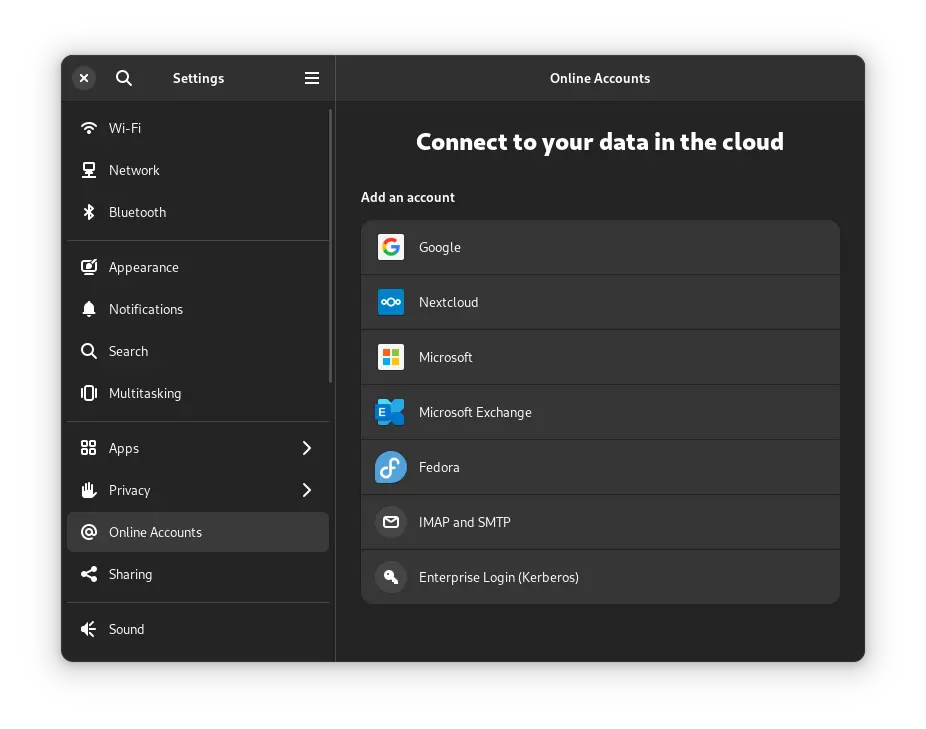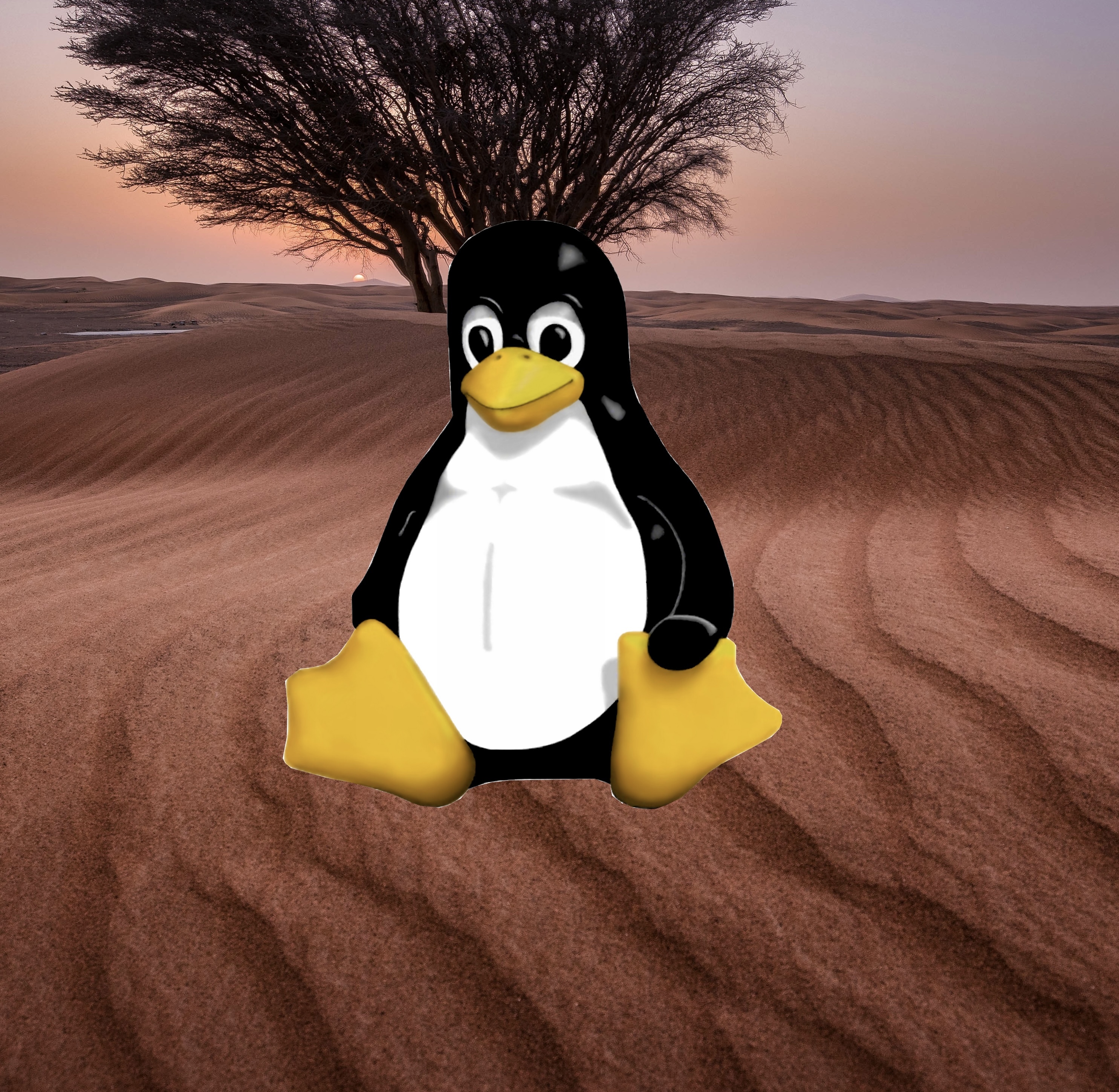After convincing my employer to move away from MS office I can finally make the permanent switch away from windows.
I settled on pop_os for now since it supports hybrid Nvidia graphics out of the box and I am a noob.
Two questions:
-
I used OneDrive, and especially the file on-demand (all files on server visible in explorer but only downloaded when needed) feature a lot. What cloud storage provider has the best Linux integration? I dabbled with NeXtCloUD but the Linux client is not great, especially the file on-demand implementation.
-
What are best practices for managing apps? The last time I entertained the idea of switching, I ended up with applications installed from the snap store, flatpacks, some appimages, some through apt. It quickly gets confusing for me when I want a specific program but it, f.ex., is only distributed through the snap store. Is there a GUI (I know) way to see all applications, where they’re installed from, with an easy remove button? Akin to what windows offers?
After convincing my employer to move away from MS office
I’m curious how you managed that
Id imagine the discussion would go like “something something Linux = free something something Windows = money, hence save money by going linux” 🤓
Or going with GSuite instead
Ding ding ding
From one evil to another…
The discussion went like nobody is properly using the SharePoint, but instead people send emails with poorly version numbered documents. After a couple of attempts to educate the users my argument was to drop the hammer: if you’re forced to work online you’re more likely to work in the shared folders. If that’s true, we’ll see. But in the meantime I can get rid of windows. Most of the organisation is on macOS anyway.
Do they not know how to use a shared onedrive? It’s exactly like whatever google offers.
He just wants to use Linux at all costs.
He can still use linux with onedrive though, you can edit simple documents on the web. Edit them on libreoffice and upload them will also work.
Agreed.
Depends, Microsoft has collaborative features that libreoffice/onlyoffice can’t use
See my comment below, we’re moving to gsuite. Basically, we have a problem with people not using the SharePoint but instead sending poorly version numbered documents per mail.
My argument was that if you’re forced to work online you’re more likely to do so in the shared folder. We’ll see if that’s true but at least we can get rid of office. Most of the organisation is on macOS anyway. And we use zulip for communication.Could you just mount google drive?
Is there a good solution for that? It seems like most of the projects to do that have been abandoned.
It is natively supported in most desktops
I use the KDE integration, but it seems to create a new path every time I open a file. That breaks the recent file list in apps.
Win11? More like lose11.
I’ll see myself out the door…
Nah fuck you I laughed
- I used OneDrive, and especially the file on-demand (all files on server visible in explorer but only downloaded when needed) feature a lot
You can continue to use OneDrive. I use the OneDriver client and it works really well - your drive appears just like a local drive, but files only get downloaded when you try to access them. Once downloaded, it gets cached locally and is available offline, and is kept in sync automatically. Other cloud providers should have similar FUSE clients available.
- What are best practices for managing apps?
Best practice is to stick to packages provided by your distro’s repos. Flatpak should be your second option if you can’t find your app there, and AppImages should be your third option (since Flatpaks are superior as they can share dependencies, unlike AppImages). Avoid Snap. In fact, avoid any distros that even use Snap (*buntu). Also, if you’re on a Debian/Ububtu based distro, avoid adding PPAs (thirdparty user repositories) as far as possible, as these can cause dependency issues and may cause pain when you upgrade your distro.
Is there a GUI (I know) way to see all applications
That should be provided by your distro - Gnome-based ones have “Software” and KDE-based ones have “Discover”.
This is the best answer, but I would like to just add a tip:
- I used OneDrive
Try “Online Accounts” inside settings, should work without installing anything else (I’ve never tried it, but should work).
Screenshot

Online Accounts only supports Outlook mail at the moment, so it’s not a Onedriver replacement yet.
It does work, but doesn’t always work as well as some third party clients. That’s also assumes everyone is using gnome.
OP said is using pop_os and for the time being pop still ships gnome.
Thank you for the detailed reply.
-
I’ve used onedriver previously, or rather I do use it on my backup machine. While it works well what I’m missing is a progress indication for the download of files, I occasionally work with bigger video files f.ex. Also an option to keep directories synced permanently to the device would be great. In OneDrive you can check a box in the context menu to ‘make files available offline’. It keeps the file/directory synced and available offline. This is again useful for bigger projects. I could of course move those to a temporary location on disk but I do like the set and forget nature of working in automatically synced directories.
-
I assumed that’s best practice, thank you. What I find overwhelming is the amount of choice. Which is a general Linux “problem” I suppose. Yes, it’s possible and elegant to manage everything through the package manager and the default repos. But if I search for a specific program, like f.ex. a clipboard manager, I might just get recommended something that is not there. And all of a sudden I have an appimage. Or the nextcloud client for example, it’s on the flathub but only the appimage supports the above file on-demand feature.
Btw, how can I be sure that software from the flathub is kept up to date? My understanding is that it’s often community maintained?
how can I be sure that software from the flathub is kept up to date? My understanding is that it’s often community maintained?
If it got the ownership verified then should be kept updated by original developers, like Kodi for example (see the blue checkmark).
-
Huh, I wasn’t awars of that onedrive client.
Personally I use OnedriveGUI which is a frontend for the CLI based abraunegg client.
Your recommendation might be more mature since this one doesn’t support the file on demand stuff as far as I know
Is this on your personal work PC or company wide?
Be careful not to burn the Linux bridge by being not able to support the transition now… :)
Edit: what I mean is, if you are responsible for this transition, now study study study… Be very careful and test each setup on a “test” machine before going to deploy for others…
Fortunately it’s just my personal machine. Most of the organisation is on macOS anyway.
It’ll be enough of a challenge to properly transition existing docx to the gsuite were switching to.
transition existing docx to the gsuite were switching to.
From a half-proprietary, broken format to a document-as-a-service platform. 🤦
Well, if gsuite doen’t work out, there’s OnlyOffice/Univention corporate server for selfhosting.
I worked at a company that was all-in on GSuite (now Google Workspace) for five years. They’ve got this covered.
I do not endorse Google apps. They suck. Web apps suck. Electron apps suck. Native apps are where it’s at.
-
Mount a remote file system via SMB or NFS and it’ll work like any folder on your PC - but you need a network connection to access it. If you need offline mode, maybe create a folder /offline and replicate it to your hard drive with a bidirectional synchronization tool like unison or syncthing. As for providers, personally I use Hetzner Sotrage Box because the price and service looks good enough to me that I didn’t bother to look for alternatives.
-
KDE Discover is a GUI application for adding/removing packages from different sources
-
At my uni we use OpenAFS. It works on any operating system.
Hmm, I’ve never heard of this before. It seems pretty mature and robust. It even passes Kerberos tickets across SSH for authenticating file access for an sshfs mount or remote login. Seems like a better way to centralize authentication than NFS at first glance.
Thanks for the rabbithole.
You are welcome.
deleted by creator
In Pop!_OS, you have the Pop!_Shop, and they added their own repos for software aren’t included in Ubuntu’s repo or exist mainly as Snap packages; they also included Flathub.
Under the app name you want to install, you’ll have a little drop-down box with option to choose (if there’s more than one option) where to download the package from.
Pop!_Shop
That app was slow and laggy for me. I started using app called “Software” and that one is amazing.
I don’t know why we have 2 stores preinstalled and what is the difference
Pop!_Shop is the store made for Pop!OS while Software (full name GNOME Software) was made for every distro that uses GNOME and doesn’t want to make their own store. Pop!OS is moving away from GNOME and developing their own Desktop, so they want to have their own app suite and are still keeping the GNOME apps until there desktop fully releases as backup
Thank you for explaining this. I was sure its the same thing with different gui, but it all makes sense now
System76, makers of Pop!_OS, are making an entirely new desktop environment called COSMIC. The new DE will come with a number of its own apps to replace the GNOME ones, including the App Store.
The new App Store just got an update which apparently addresses your speed concern: https://blog.system76.com/post/your-monthly-cosmic-fix
2 … Is there a GUI (I know) way to see all applications, where they’re installed from, with an easy remove button? Akin to what windows offers?
For a GUI option, with KDE, I can go into the Discover app store, and then click the “Installed” link in the lower-right.
For a CLI way to list all apps, I found this page which gives this command:
for app in /usr/share/applications/*.desktop ~/.local/share/applications/*.desktop; do app="${app##/*/}"; echo "${app::-8}"; done | sortHave fun finding the best option for your system.
- Good that only you do this, as a whole company setup is complex
- Pop_OS is currently not that well maintained afaik, their GNOME desktop is quite outdated.
Just using their OS for the hybrid graphics support is a valid point, but should not be the only one.
Having a well managed OS is crucial, but I disagree that Ubuntu base is the best here.
For stability, a centrally managed Fedora Atomic would be better I think. Way more stable, image-based, all peolple would have exactly what they need.
You could build images locally and take care of the exact updates like that. Or you just share specific configs for each role, like preinstalling different software.
But having things like specific policies, any files, hardening etc. is totally possible during image creation.
Pop_OS is currently not that well maintained afaik, their GNOME desktop is quite outdated
The shit people say in here sometimes…
What do you mean?
To my knowledge they dont ship GNOME 46 but some old “LTS” variant (GNOME doesnt do LTS variants)
That’s a long way from “not being well maintained.”
Think of linux as desktop android… That’s probably the best advice I can give you. Depending on which distro you choose, they’ll have different app stores. GNOME Software for some, discover (yes, that’s the name of the program) for others, Pop!Shop for Pop!OS. As for managing apps - avoid installing snaps. Other than that, don’t worry about it.
Pretty much all cloud providers are supported on linux, most of them just don’t have bespoke apps and get added directly to your file manager. Some distros have a step during the initial setup, where you can log into accounts and what not, which should setup stuff like OneDrive automatically. And if not, i don’t think setting them up manually is too hard.
Do not install/uninstall stuff from the terminal. Most self-respecting user friendly distros have an app store which does all the things for you. Installing things from the terminal/the internet should be a last resort, only if the thing you want to install is not available anywhere else.
As for my distro recommendations… try Fedora KDE or Linux Mint.
It’s worth noting that all of these “app stores” are just front ends for your native package manager (apt or pacman for example) and flatpak, so it’s worth learning the difference between the two (native and flatpak) but it doesn’t really matter if you install packages using GUI (the “app store”) or CLI (package manager or flatpak install command) l. It comes down to preference and I doesn’t agree with @Presi300@lemmy.world that it should be a last resort to use CLI, but if you are a beginner, yeah, it is probably easier to use the " app store" things.
Pop os has an app store called “pop shop”, that has both apt and flatpaks. Get all of your apps from there. They also have an app installed called “eddy” that you can use to install .deb packages in case an app is not available in their app store and you had to download the .deb package for it. Also, I know pop os has an outdated desktop, but they’ve been working tirelessly on their rust based cosmic desktop and it’s coming along pretty nicely (an alpha release is coming soon). They do maintain their current distro no problem. I honestly would stick with it and set it up to your liking. It’s a very good distro. As for your OneDrive, that can work with Linux no problem. You can also use Google drive on Linux.
What I try to do for managing apps is use the standard repository and flatpak as much as possible and any other method as little as possible.
I use Linux Mint, and the Software Manager has a “Show Installed Applications” option from which you can pick and choose to uninstall. I think the Pop!_Shop offers similar functionality in Pop!_OS but last time I used it, it felt like they put more thought into how it looks and very little into how it works. One of the main reasons I stopped using Pop!_OS.
There’s an “online accounts” section in settings that lets you log in with your cloud provider, making nextcloud, google drive or onedrive integrate the way one drive does on windows.
Or you can use the Celeste client
Online accounts works seamlessly with Google Drive but yet not for OneDrive.
It also is not the same thing as “Drive Sync” on Windows that mirrors local files.
Well on gnome 46 the Microsoft sync is much better, but the reason I mentioned Celeste is that it does the thing you mentioned
I prefer to use debs (apt) for most packages and just a few Flatpaks. Avoiding snaps (Among others because I find the Snap Store too messy) and I do not bother with AppImages. But if you (OP) would need certain software that is only available as AppImage then go it.
If you want an alternative a seafile server and the the seafile drive client that mounts a seafile folder into your file browser works well. it will also download the file as you need it rather than sync everything inf the folders
Just wondering, does seafile cache the previously opened files locally, in case I don’t have internet.
OneDrive does this on Windows and I’ve been looking for something similar and self hosted.
Yes, you can set if they stay local, download all, etc
Can it automatically keep them for a certain amount of time after I’ve opened them though?
I’ll definitely be trying out seafile eventually!
The Seadrive has a cli setting for size of cache amd how long before cleaning. There is also Seafile Client which has a lot more options of different folder and file sync capabilities like the context menus in Windows Onedrive. Try them both out and see eaht fits your use better
Cool, thank you! I’ll definitely be sure to try them out.
deleted by creator















